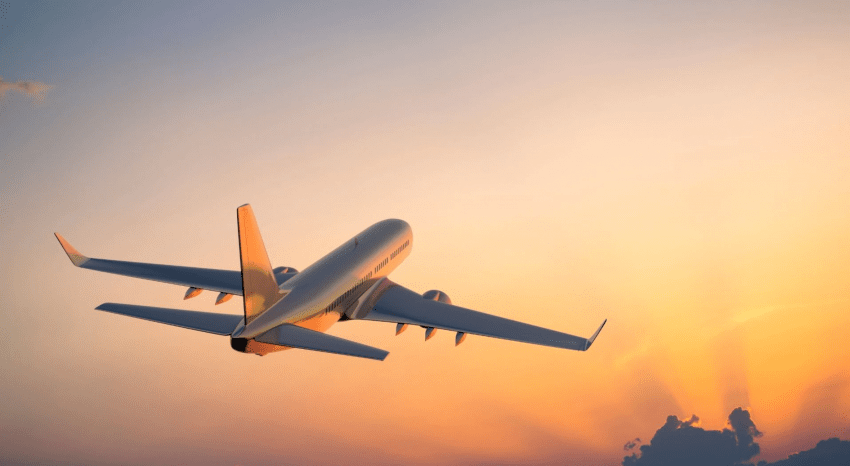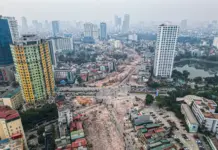In a press briefing following a virtual meeting with Australia’s national cabinet, New Zealand prime minister Jacinda Arden said that a travel “bubble” between the two countries was discussed.
“There are a lot of similarities in the way we have each tried to manage [Covid-19] and get on top of it,” she said. “Therefore, the same goals for both us. Neither of us want cases coming between our countries. Regardless of our future path, we’ll be looking for ways to do it safely.”
She gave no timeframe for such a bubble to be established, but noted the extensive trade and tourism links between the two countries. She pointed out that New Zealand sent 1.2 million tourists to Australia in 2019, second only to China.
New Zealand claims to have brought the coronavirus under control. Australia is also gradually easing lockdown measures taken in response to the pandemic.
Cirium schedules data shows that seats offered in April 2019 on the pivotal trans-Tasmin route fell 91% from a year earlier.
Arden’s remarks follow recent indications that other nations in the region are considering future steps for international travel.
In April, the Wall Street Journal reported that Beijing has quietly proposed lifting travel restrictions to the mainland in order to allow a degree of business travel.
On 1 May, Singapore minister for trade and industry Chan Chun Sing said he had participated in a video conference with leaders from Australia, Canada, South Korea and New Zealand to discuss plans for the movement of goods and services as well as the essential movement of people.
“Singapore will work with like-minded partners to facilitate the resumption of essential cross-border travel, with mutual assurance of health standards. We agreed to work out guidelines that will allow our people to travel between our countries once more, without compromising efforts to safeguard public health.”
Local media subsequently quoted Chan as saying that common health declarations and other checks will be necessary before cross-border travel can resume.
Singapore’s “circuit-breaker” system to stem the spread of coronavirus is in place until 1 June, limiting movement locally. Neighbours such as Malaysia, the Philippines, Thailand, and Indonesia continue to battle coronavirus outbreaks. – Greg Waldron @ flightglobal
Southeast Asian countries start easing virus measures

The flags of ASEAN countries | photo: shuttersotck
Malaysia allows businesses to reopen on Monday, Singapore to loosen restrictions on Tuesday
Some countries in Southeast Asia have begun to slowly ease lockdown restrictions as the rise of novel coronavirus cases has started to slow, according to local reports.
Malaysian Prime Minister Muhyiddin Yasin said in a public address on Friday that the government would ease movement controls.
Under a new regulation called the Conditional Movement Control Order (CMCO), shopping malls were allowed to reopen, with a maximum of four family members from the same household permitted to travel together in a private vehicle.
Malaysia reported 55 additional COVID-19 cases on Monday, bringing the total number of infections in the country to 6,353.
During a daily media briefing on the pandemic, Noor Hisham also said that no coronavirus-related deaths had occurred int eh past 24 hours, keeping the country’s death toll steady at 105.
Singapore also announced plans to loosen restrictions starting May 5 for some businesses amid efforts to reopen the economy by June 1, the country’s Health Minister Gan Kim Yong said at a virtual press conference on Sunday.
National Development Minister Lawrence Wong, co-chair of Singapore’s COVID-19 task force, said schools would start reopening on May 19, bringing back students in small groups.
“We will focus initially on the graduating cohort that are taking national exams. And so, priority will be given to those who require school facilities for their coursework and practical sessions,” said Wong.
Speaking to parliament on Monday, Gan said the lockdown measures could be lifted when community cases fell to the single digits over a sustained period.
Singapore reported 573 new cases of COVID-19 as of noon on Monday, bringing the country’s total to 18,778, with the majority of new cases being holders of work permits residing in foreign worker dormitories, the Ministry of Health said in its daily update of preliminary figures.
Meanwhile, more airports in Thailand have been allowed to operate special international flights between 7.00 a.m. and 7.00 p.m. local time (2300GMT to 1100GMT) each day, according to a new order issued by the country’s civil aviation authority on Sunday, local news reported.
The order allows all international airports, including Krabi, Chiang Mai, Chiang Rai, Samui, Surat Thani, Hat Yai and Hua Hin, to handle special-status international flights, such as those repatriating foreign nationals or flying home Thai citizens, according to daily Bangkok Post – Rhany Chairunissa Rufinaldo @ aa




